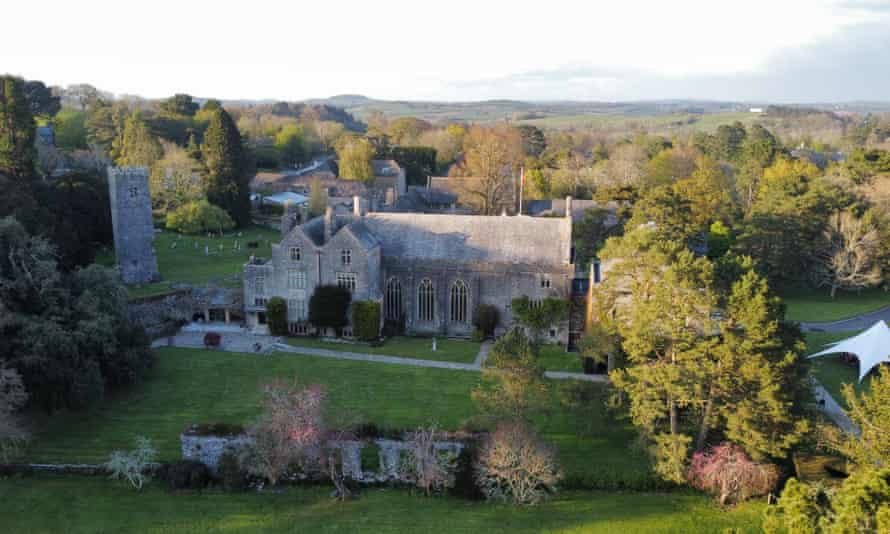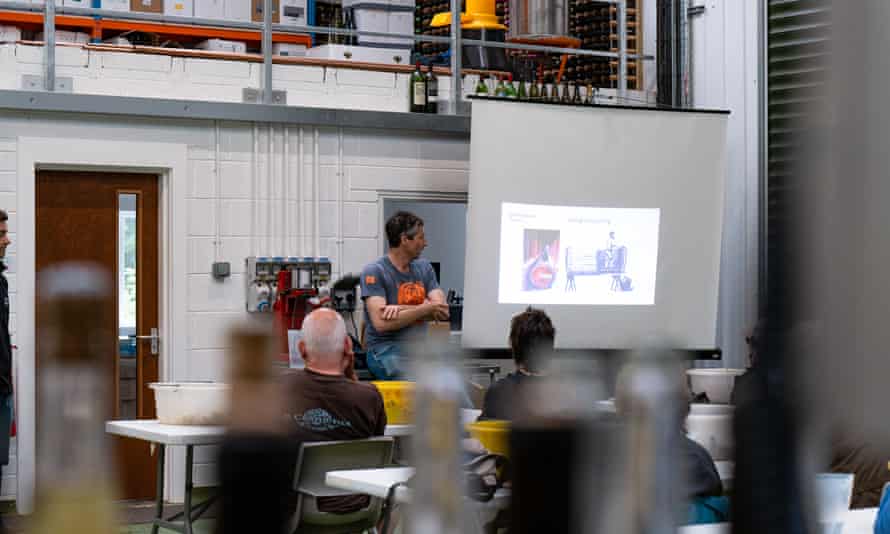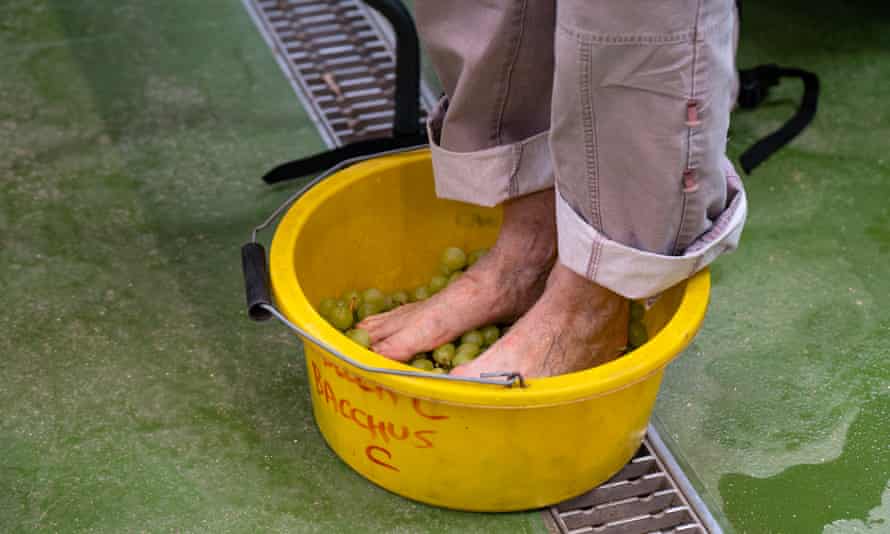I am blindfolded with a peg on my nose, chewing on a wine gum. This wasn’t exactly what I expected when I signed up for a wine course … I can taste nothing except gummy blandness. Then, when instructed, I remove the peg. Whoa! My mouth is flooded with intense fruity sweetness.
I am on the new Crush Course at the Dartington Trust in Devon, an immersive weekend in wine and wine-making. Dartington, a centre for learning, arts, ecology and social justice near Totnes, runs short courses in everything from singing and ceramics to fermentation and garden design. This was an exercise on the first day of the Crush Course to show what an important role the nose plays in detecting flavour. Our tastebuds are on and around the tongue, but they can only identify five basic tastes: sweet, sour, salty, bitter and umami (savoury). The nose, however, can detect hundreds of flavours.

Smelling something is one thing; naming it is another. We can all sniff a red wine and detect berries, but most would struggle to distinguish between, say, blackcurrants, blackberries and bilberries. That was our next lesson. Our teacher, master of wine Justin Howard-Sneyd, passed around little bottles from a wine aroma kit containing dozens of typical wine flavours. It made for a fun guessing game, and it was satisfying to distinguish raspberry from strawberry, or detect a whiff of fresh pineapple or a waft of leather.
Smell, of course, serves another purpose – to tell us when wine has gone “off”. Out came another kit, this time full of wine fault aromas. The smell of corked wine was passed around, causing some people to reel in horror. I couldn’t smell a thing – it took me several attempts to detect a faint, not entirely unpleasant smell of musty paper. Justin assured me this was normal: some people are more sensitive to cork taint than others. No wonder I’ve never sent wine back in a restaurant … But another bottle, containing a sulphurous smell, made me gag.

After all this sniffing I felt we’d earned a drink, and our teacher agreed. Armed with tasting charts, we sampled several pairings of contrasting wines, such as chardonnay and sauvignon blanc, from all over the world. The tasting continued over dinner in our private dining room, with each course – crab noodle salad, confit duck and gooseberry fool – matched with a wine. It was a chance for our group of about a dozen people to get acquainted. Most of us were travelling solo, and our wine knowledge ranged from enthusiastic amateur to practically professional; the course is aimed more at the former.
The next day was all about making wine, and we spent it at Sandridge Barton winery, the new home of 40-year-old Sharpham Wines, which opens to the public next spring (the original winery, on the nearby Sharpham estate, is open for tours and tastings until 11 December). The Sharpham Wines range includes sparkling, white, red and rosé, all made from their own grapes (pinot noir, chardonnay, madeleine angevine and bacchus, and this year they have planted pinot meunier), and have won numerous awards. After a presentation on the wine-making process, we got stuck in: treading the grapes to make juice – messy but weirdly therapeutic; adding enzymes to clarify it; and adding yeast to start a fermentation.

After a walk around the 13-hectare (32-acre) vineyard, which sits in a south-facing bowl on the edge of the River Dart, we toured the winery and sampled vintages-in-progress from the tanks and barrels. The climax was hand-disgorging our own sparkling wine, a technique used in the methode traditionelle of sparkling wine production to remove the lees (dead yeast) after secondary fermentation in the bottle. The bottles had been stored upside down so the lees settled in the neck. We each carefully held a bottle of fizz – still top-down – then popped it open to release the lees, before quickly jamming our thumbs over the top and flipping it upright, trying not to spray each other like Formula One champs and lose too much precious wine. We then topped up our bottles with more sparkling wine, added sugar (according to the champagne sweetness scale) and resealed them to take home.
Back at Dartington, it was time for more tastings, this time of wines that we had brought with us. We each introduced our bottles – they didn’t have to be expensive, just interesting in some way. I had taken a dry white made from the hárslevelű (lime leaf) grape in Tokaj, Hungary, a region better known for its dessert wines, from my neighbourhood wine merchant, Highbury Vintners. Others had brought wine from their local vineyard or from a holiday, including a couple who generously shared their last bottle of vintage claret. Justin opened several bottles from his own wine range, Domaine of the Bee. Dinner tonight was more casual: sharing platters, barbecue dishes and cheese boards from Dartington’s restaurant, the White Hart.
We had one morning left on our whistlestop wine weekend: just enough time to cover fortified and sweet wines. Who doesn’t want to tuck into a sauternes or a tawny port at 10am on a Sunday? It didn’t faze me, although I noticed afterwards that most people had only a couple of sips of each wine (what a waste!).
Our accommodation was basic – student-style single rooms with shared bathrooms – but perfectly adequate, as there was little downtime. Breakfast was more lavish, with lots of homemade dishes (fruit compote, proper baked beans, pastries) and local bacon, eggs and sausages; our packed lunches were full of homegrown salads. I would have liked more time to explore the 486-hectare Dartington estate, although I did manage a fast march around deer park, woodland and river. It is definitely worth arriving early to spend time in Totnes – I visited the castle and the weekend market, and ate globe artichokes and clams at the Bull, a new-ish organic pub. It also has rooms, for those who want to stay an extra night or two in more luxurious surroundings.
The aim of the course was to “develop a deeper appreciation and enjoyment of wine”, and it succeeded. Our group is already planning a reunion over a wine-tasting dinner – nose pegs optional.





